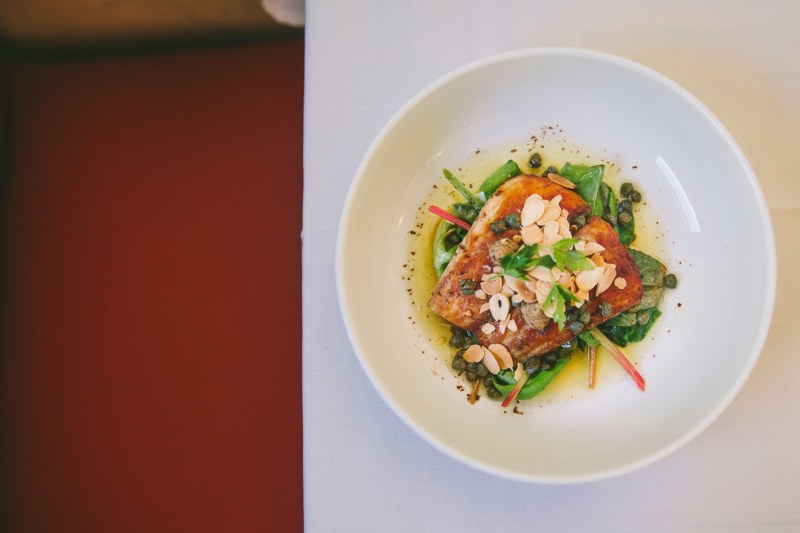Fall is arguably the best time of year to feast, no matter where you live. For those near the ocean or at least a good seafood market, there’s all kinds of autumnal bounty.
Wine can play a key role here, enhancing the flavors of things like fresh blue crab or dishes like cioppino. There are obvious matches made in heaven, such as Muscadet and oysters or grilled salmon and Pinot Noir. But there are lesser-known couplings as well that can be equally resonating, if not even more so.
Another bonus of eating seafood as the days get shorter and chillier? It will remind you of the beach and its many sun-kissed joys. So take a look at some ideas below as you look to incorporate more sea-caught protein to your table, whether it’s fresh from the coast or thawed from your freezer.

Swordfish, Wahoo, and Mackerel
Mississippi restaurant Elvie’s features an impressive seafood and wine program, headed by chef Hunter Evans and sommelier Brandi Carter. The former recommends cooking meaty fish like swordfish, wahoo, and mackerel over charcoal with your go-to streak rub of choice. Carter suggests wines like red Burgundy (aka French Pinot Noir) for its minimal tannin content and medium-plus acid to pair with such fish. She also suggests Gruner Veltliner for its high acid and peppery notes as well as Semillon for its roundness, richness, zestiness, and waxy components.
Scallops
Beyond perhaps lobster, there’s hardly a seafood item more decadent than a good scallop. Pan-searing is the way to prepare them, achieving an ideal golden brown outer that locks in flavors and creates a tasty caramelized effect. A lighter and brighter red like Gamay can do well alongside scallops but it’s hard to beat the zesty pop of a good Albariño or the bigger-bodied and sometimes slightly creamy Pinot Blanc.
Shrimp, Crab, and Flounder
Evans likes to cook shrimp, crab, and flounder on the half-shell on the grill. The skin protects the fish from the heat, ensuring the end result retains a delicious amount of moisture. To really bring out the flavors, Carter suggests wines like rosé from the Bandol region, or a Gamay sparkling rosé for its fruit-forward qualities. Also suggested is Voignier given its softness and bitterness Carter likens to almond husks.
Halibut
It’s hard to beat fresh halibut and, on the West Coast, this is a great time of year for the Pacific version. It does great in the pan as well as the grill and can be hit with a simple mix of salt, black pepper, and citrus or something more involved like a mango salsa. Wine-wise, you need to be aware of the mildness of the fish and you don’t want to overpower the subtle sweet and buttery notes. An un-oaked Chardonnay is a great option, as is Sauvignon Blanc with its tropical fruit notes and featherweight freshness.
Snapper, Grouper, and Striped Bass
Chef Evans likes to go the simplistic route with fish like snapper, grouper, and striped bass. They tend to be lighter and more delicate so just a bit of lemon and butter is all they really need. He recommends baking or cooking in a skillet, with some grilled or sautéed veggies to join. As for wine, Carter opts for Muscadet for its acid and saline qualities along with Riesling. She also suggests a blanc vermouth like Mancino Secco.
Editors' Recommendations
- How to make a mojito: The ultimate cocktail recipe
- How to make The Last Word cocktail, a gin classic from another era
- Far older than you think: A beginner’s guide to Mexican wine
- How to brunch like the French with lobster croissant and champagne
- From $350 to $1,399: The 5 best outdoor pizza ovens in 2024


